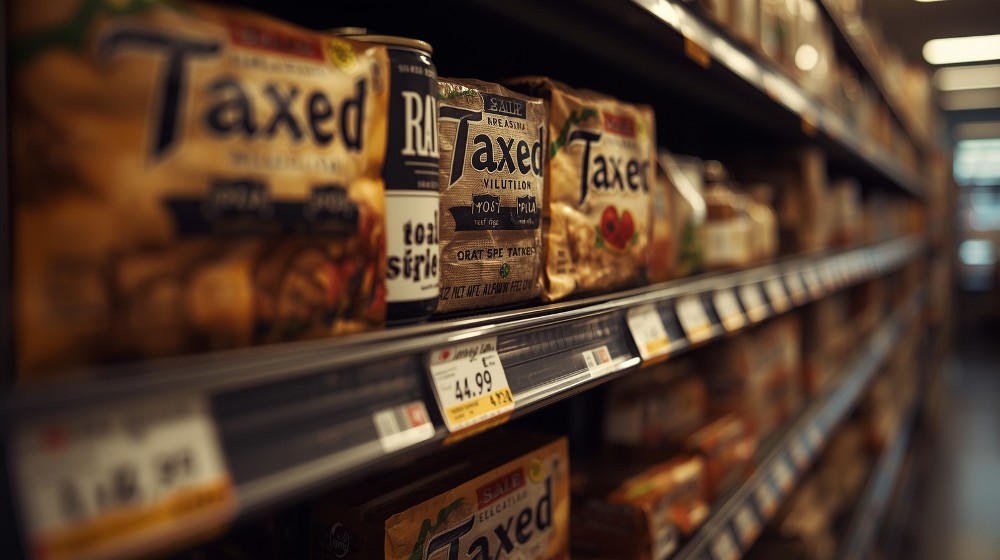As autumn settles in across the United Kingdom, households that routinely monitor their grocery bills may be facing a fresh headwind. Major supermarket chains — including the likes of Tesco, Sainsbury’s, Asda and Morrisons — have jointly warned the Chancellor, Rachel Reeves, that planned tax and business-rate changes in the upcoming budget could trickle down directly into food-price inflation.
The heart of the matter is this: retailers argue that their ability to absorb cost increases is increasingly constrained. The new measures under discussion include a surtax on large retail properties (those with rateable values over £500,000), increased employer national insurance contributions, higher wages and rising packaging or other regulatory costs.
From a personal-finance perspective, this is significant. If retail margin pressure grows and businesses cannot offset all cost rises through productivity improvements or supplier renegotiations, the burden often falls on the consumer via higher prices, smaller pack sizes (a phenomenon sometimes called “shrinkflation”) or reduced promotions.
What’s driving the pressure
Firstly, many large-scale food retailers operate on relatively thin margins. According to the trade body British Retail Consortium (BRC), large stores currently account for about one-third of all business-rates bills in the retail sector, despite being a small fraction of total store numbers.
Secondly, the cumulative cost burden is increasing. For example, increases in the national living wage, higher employer national insurance, packaging taxes and regulatory compliance have already added billions of pounds in costs to the retail industry this year.
Thirdly, food-price inflation remains a nagging issue. While headline inflation in groceries may have eased somewhat, the underlying cost pressures — from energy, labour, logistics, commodity inputs and regulatory costs — are still intense. In that context, additional tax burdens could well prolong or aggravate inflationary trends in your grocery basket.
What this means for your household budget
If you manage a household budget — especially one sensitive to grocery-spend fluctuations — here are a few key implications:
You might see less frequent discount offers or deeper price cuts. Retailers under margin pressure may pull back promotions or simplify range offerings.
The so-called “own-brand” strategy may become even more important. When supermarkets shift cost burdens, private-label items often act as the buffer zone.
Pack sizes might shrink even if the price remains unchanged, leading to effective unit-price increases. This kind of shrinkflation has been spotted in recent weeks.
Your strategy of “budget a little extra cushion for groceries” may pay off. If prices rise faster than expected, having a contingency or re-allocating other categories may reduce stress.
What you can do, from the standpoint of a personal-finance specialist
Here are practical steps you should consider to protect your grocery budget:
- Track unit prices: Instead of just looking at the shelf price, check the cost per 100 g or per litre. Shrinkflation tends to sneak in by reducing quantity but keeping list-price roughly similar.
- Review and revise your shopping list: Identify the items that take the largest share of your spend (e.g., fresh produce, meat, dairy, bread). Prioritise stabilising those first.
- Use loyalty schemes and offers smartly: Keep an eye on member deals which tend to “absorb” margin pressure. But beware: promotions today may be less generous, so don’t assume every week will be a big saving.
- Rotate brands and pack sizes: If your usual brand raises prices or shrinks size, compare alternatives or larger-pack versions to get better value per unit.
- Consider the impact on your broader budget: If grocery inflation rises, you may need to adjust other categories — for example, leisure or discretionary spend — to keep your savings or emergency fund plan on track.
- Stay informed about policy and market signals: Knowing when the Budget is coming, what tax measures are being proposed, and what industry players (like supermarkets) are warning about can give you a timing advantage in changing shopping behaviour or locking in bulk buys.
Looking ahead: what to watch
- Budget announcements: Keep tabs on the official Budget date and any statements by the Chancellor about business-rate reforms or new taxes on large retailers. The industry has already signalled that the coming Budget is “make or break” for controlling food inflation.
- Retail-industry cost disclosures: Quarterly reports from major supermarkets may flag how much cost inflation they are absorbing vs passing onto shoppers. These disclosures may hint at upcoming price rises.
- Commodity and input cost trends: For example, labour, energy, transport, packaging raw materials. These are upstream pressures; tax is only one piece of the puzzle.
- Consumer-spend behaviour shifts: If households pull back on groceries or shift more to discount channels, that may moderate price rises. For your budget, it means staying alert to your own behaviour changes.
Bottom line
From a personal-finance lens, the warning from the supermarket sector isn’t simply a business-story; it’s a story about your household budget. When major retailers tell the Chancellor that “households will inevitably feel the impact,” they’re signalling that the cost-of-living pressures we’ve all been managing may tick up again.
Your best defence is preparedness: track your spend carefully, focus on the unit cost of what you buy, be agile in adjusting shopping and buying habits, and keep your broader budget flexible enough to absorb modest shifts in grocery inflation. Staying ahead of the curve now means you won’t be caught off-guard if next year’s grocery bill climbs faster than you’d planned.
